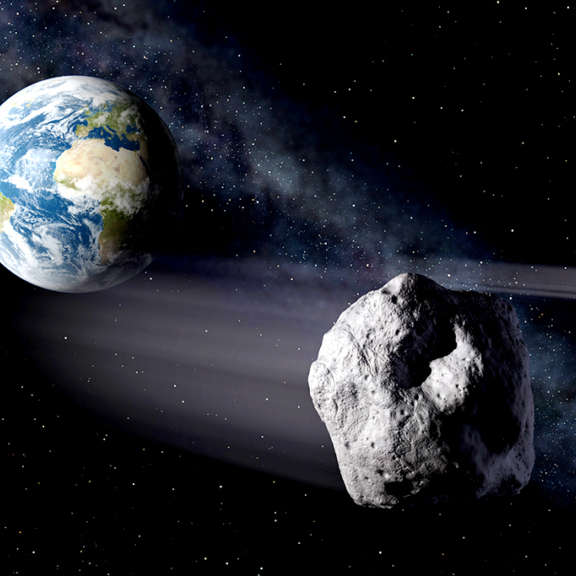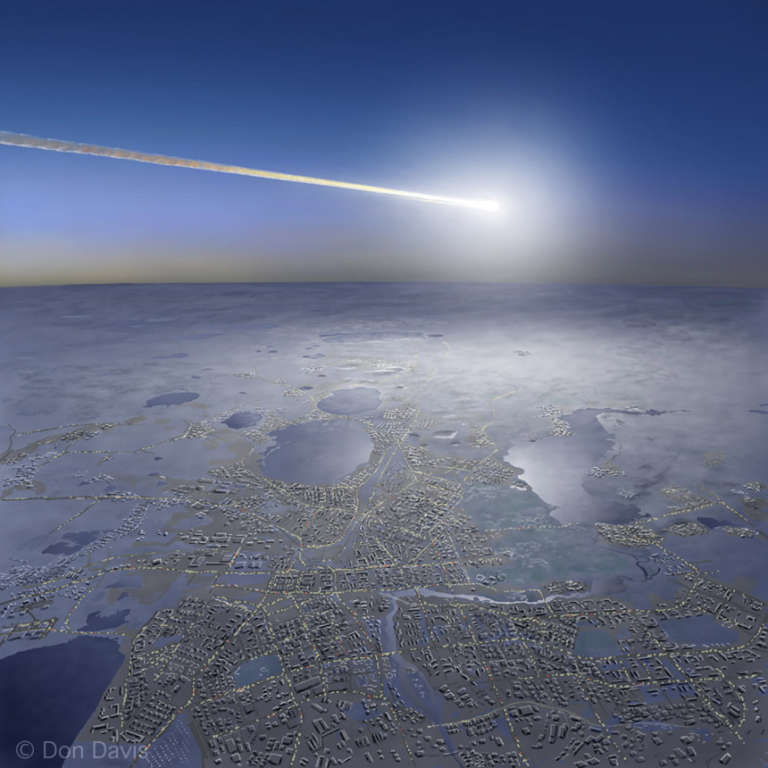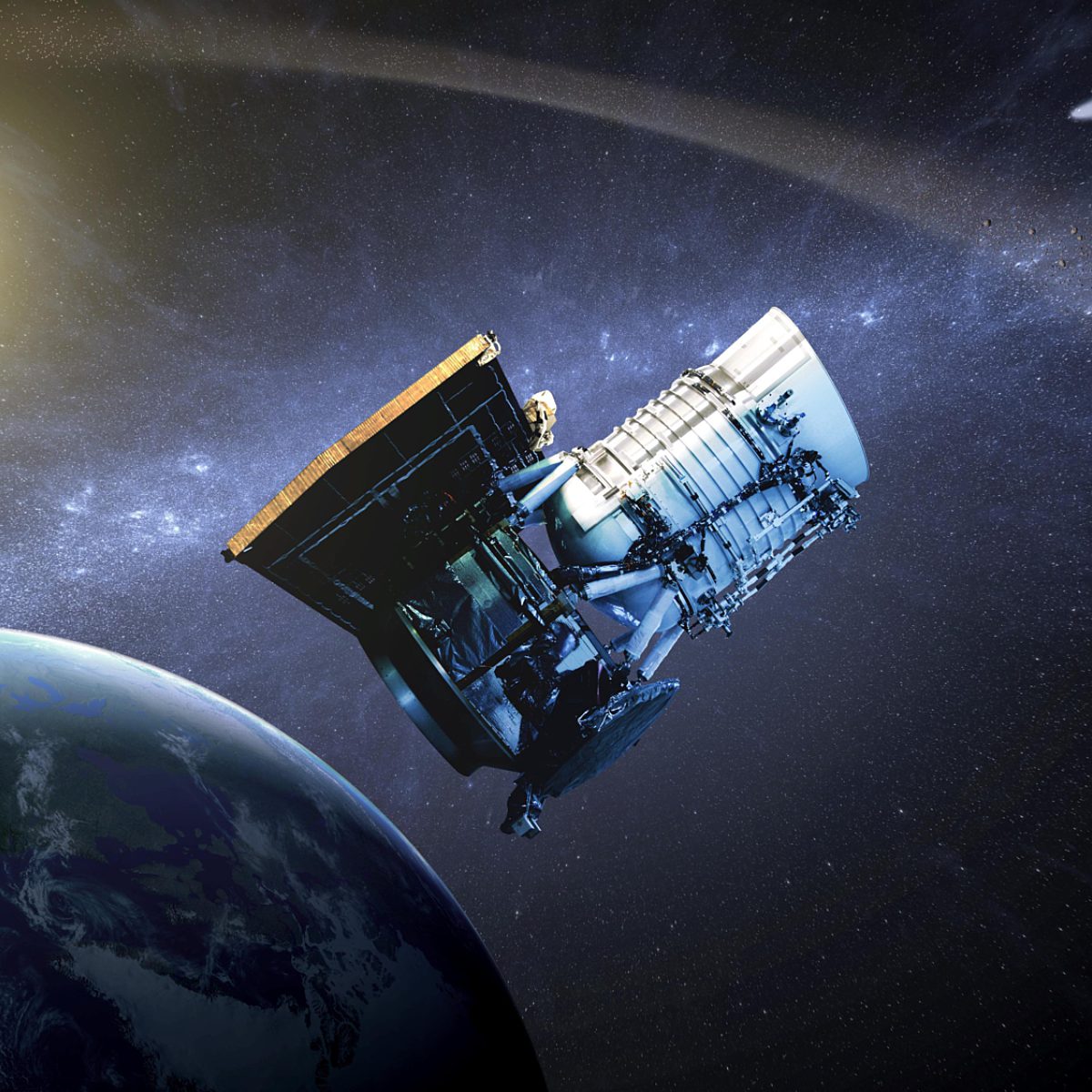Jason Davis • Sep 24, 2019
NASA to Build New Asteroid-Hunting Space Telescope
NASA is boosting its efforts to defend Earth from potentially dangerous asteroids. The agency announced Monday that it plans to build and launch an asteroid-hunting space telescope as soon as 2024 as part of a new, multi-pronged approach to planetary defense. The yet-to-be-named telescope will use an infrared detector to pick up the heat signatures of small near-Earth asteroids against the cold backdrop of space.
A NASA presentation says the telescope will find 90 percent of asteroids wider than 140 meters that have a chance of hitting the Earth within 10 years. This goal responds to a congressional directive set in 2005. Right now only a third of those asteroids are cataloged, and none pose a threat to Earth for the foreseeable future. However, an impact by one that we haven’t found yet could wreak country-scale destruction and cause more casualties than any natural disaster in recorded history. Even a 50-meter-wide asteroid could destroy a major metropolitan city in the unlikely event of a direct hit; NASA says the telescope will help compute the chances of objects that size hitting Earth within the next 100 years.
"This may prove to be the most important investment ever made by NASA," said Bill Nye, CEO of The Planetary Society in a press statement. "Early detection and deflection of an asteroid on a collision course for Earth could save countless lives. A space-based asteroid-hunting telescope will better equip the world to be prepared for any potential threats."
Members of the press: Our official statement on this news is available here.
Defend Earth
How The Planetary Society works to decrease the risk of Earth being hit by an asteroid or comet.
The telescope will cost up to $600 million including its launch vehicle. It joins NASA's DART mission under the jurisdiction of the agency's newly formed Planetary Defense Program, which has a budget separate from other planetary science activities. NASA plans to pursue more planetary defense missions in the future and fund proposals for NEO research and technologies to deflect asteroids on course to hit Earth.
"This represents a totally new way of thinking about planetary defense: not just as a ground-based telescope observing program, but as a holistic development program to actively seek out and prepare for potentially threatening NEOs," said Casey Dreier, chief advocate for The Planetary Society. "For too long this effort has limped along with less funding than NASA's public relations office. After years of modest growth, NASA is now committing to an ongoing investment in spacecraft and research that will help ensure the long-term safety of the human race."

The State of Planetary Defense
Vishnu Reddy delivers a sober but hopeful report on our understanding of near-Earth objects, their dangers, and our readiness.
The proposed space-based asteroid survey telescope won’t be NASA’s first. The agency’s current space-based asteroid hunter, NEOWISE, has made more than 800,000 infrared observations of approximately 34,000 different solar system objects. It was originally designed for astrophysics research, and launched in 2009 as the Wide-field Infrared Survey Explorer (WISE) on a mission to scan the sky for luminous galaxies and cool, nearby stars. After the telescope’s supply of frozen hydrogen used to chill its two longest-wavelength infrared detectors ran out in 2010, it was placed into hibernation before being repurposed as an asteroid hunting mission using only its two shorter-wavelength detectors in 2013.
Now, NEOWISE's mission is nearly over. By next summer, the spacecraft's orbit around Earth is expected to drift to the point where it will be unable to hunt for asteroids without sunlight or reflected Earthshine entering the telescope.
NEOWISE, near-Earth asteroid tracker
NEOWISE was a space telescope to detect, track, and study near-Earth asteroids.
The new asteroid-hunting telescope is based on a NEOWISE successor called NEOCam, which received initial study funding from NASA in 2017. The telescope would have a 50-centimeter aperture and be stationed at the Sun-Earth L1 point, a gravitationally stable spot between the Sun and Earth. From there, the telescope will look away from the Sun, towards Earth, searching for asteroids in front of and behind our planet’s orbit as it travels around the Sun. This region of space is difficult to search with ground-based telescopes due to the Sun’s glare.

"The first step to protecting humanity from impact is to find the dangerous asteroids," said Bruce Betts, chief scientist for The Planetary Society. "To better accomplish this, the planetary defense community has long wanted a dedicated space-based infrared survey telescope to find, characterize, and track near-Earth objects. It's great to see NASA committing to finally make this a reality."
Planetary defense is one of The Planetary Society's top policy and project priorities. Since 1997, the Society's Shoemaker NEO Grant Program has spent nearly $400,000 to help amateur and professional astronomers observe near-Earth objects to determine which pose a threat to our planet. The Society is also an active participant in the biennial Planetary Defense Conference, and has previously funded development of an asteroid deflection technique called Laser Bees.
Support our core enterprises
Your support powers our mission to explore worlds, find life, and defend Earth. You make all the difference when you make a gift. Give today!
Donate

 Explore Worlds
Explore Worlds Find Life
Find Life Defend Earth
Defend Earth




